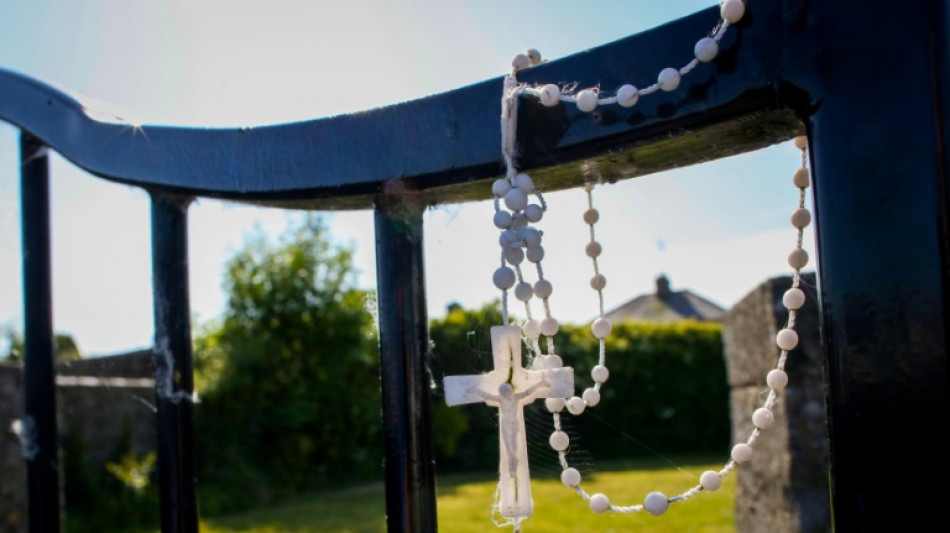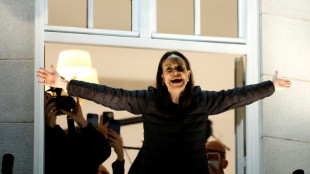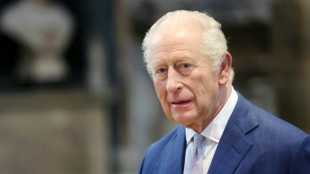

'Mass grave' excavation to finally start at Irish mother and baby home
A quiet, walled patch of grass in the middle of an Irish housing estate is set to reveal the latest disturbing chapter in Ireland's "mother and baby" home scandal.
Beneath the ground at this peaceful spot in the town of Tuam, 135 miles (220 kilometres) west of Dublin, significant quantities of human remains have been identified.
The land, attached to a home run by nuns between 1925 and 1961, was left largely untouched after the institution was knocked down in 1972.
But on Monday, excavation crews will seal off the site before beginning the search for remains next month.
"There are so many babies, children just discarded here," local historian Catherine Corless told AFP at the site.
It was her discovery of the unmarked mass burial site that led to an Irish Commission of Investigation into the so-called mother and baby homes.
In 2014, the now 71-year-old produced evidence that 796 children, from newborns to a nine-year-old, died at Tuam's mother and baby home.
Her research pointed to the children's likely final resting place: a disused septic tank discovered in 1975.
"There are no burial records for the children, no cemetery, no statue, no cross, absolutely nothing," said Corless.
It was only in 2022 that legislation was passed in parliament enabling the excavation work to start at Tuam.
- Dark shadow -
"It's been a fierce battle, when I started this nobody wanted to listen, at last we are righting the wrongs," said Corless.
"I was just begging: take the babies out of this sewage system and give them the decent Christian burial that they were denied," she added.
In findings published in 2021, the Commission of Investigation found "disquieting" levels of infant mortality at the institutions
Women pregnant outside of wedlock were siloed in the so-called mother and baby homes by society, the state and the Catholic church, which has historically held an iron grip on Irish attitudes.
After giving birth at the homes, mothers were then separated from their children, often through adoption.
The state-backed enquiries sparked by the discoveries in Tuam found that 56,000 unmarried women and 57,000 children passed through 18 such homes over 76 years.
The commission report concluded that 9,000 children had died in the homes across Ireland.
Often church and state worked in tandem to run the institutions, which still operated in Ireland as recently as 1998.
Homes were run in various ways -- some funded and managed by local health authorities and others by Catholic religious orders like the Bon Secours nuns who managed the Tuam home.
"All these babies and children were baptised but still the church turned a blind eye. It just didn't matter, they were illegitimate, that's the stance that they took," Corless said.
Analysis at the Tuam site in 2016 and 2017 identified human remains in underground cavities. A commission of investigation later concluded that they were in a disused sewage tank.
But it was only in 2022 that legislation was passed in parliament enabling the works to start there.
For Anna Corrigan, 70, who was in her mid-50s when she learned that her late mother gave birth in secret to two boys, John and William, in Tuam, the slow process has been "justice, Irish-style".
As no death certificate was ever issued for William, and John's death was not medically certified, the few official documents Corrigan has been able to access have left her with more questions than answers.
- 'Dirty little secrets' -
In her kitchen she showed AFP a copy of a 1947 inspection report of the Tuam home.
It described John as "a miserable emaciated child", even though he was born healthy a year earlier.
Both could be buried in Tuam according to Corrigan while William may also have been illegally adopted out of the country.
"They prevaricate, they obfuscate, they make it difficult for people to get to the truth," she said.
"There are dirty little secrets in Ireland that have to be kept hidden, Ireland has a wholesome reputation around the world but there's also a dark, sinister side," she said.
A team was finally appointed in 2023 to lead the Tuam site excavation, tasked with recovering, memorialising and re-burying remains recovered at the site once the work starts.
Sample DNA will be taken from people who have reasonable grounds to believe they are a close relative.
"I never thought I'd see the day that we'd get over so many hurdles -- push them to finally excavating what I call the 'pit', not a grave," said Corrigan.
"I'm glad it's starting, but if we can even find and identify a certain amount it's not going to give us all closure," she said.
I.Barone--IM



